![]()
“If anyone causes one of these little ones—those who believe in me—to stumble, it would be better for them to have a large millstone hung around their neck and to be drowned in the depths of the sea.” – Matthew 18:6
Not since 1849 when Frederick and Maria Manning had been found guilty of murder, had a married couple been sentenced to death by the justice system. But 85 years later, on the 17th October 1935, James Henry Mills and his wife, Edith Mills would succumb to the very same fate after being sentenced at the Lancaster Assizes for a murder so brutal and ghoulish in nature, that what you are about to read and hear will ask more questions than it will give answers.
On Sunday, June 30th 1935, little Helen Chester, who was just three years old, had spent the early evening playing with other children near to her home at number 22 John Bright-street, Blackburn. But when she failed to return home, her worried parents, Phyllis and Charles, after searching for her themselves, informed the police and shortly after 8pm, Helen was officially reported as being missing.
An intensive search was made in the surrounding district, both by the police and by civilians. Mill lodges, buildings and workshops were searched but nothing was seen of Helen. Canals and ditches were dragged and a police presence was also made on the River Darwen.
The search for her would continue throughout the next day, but it wouldnt be until Tuesday morning, just before 7.00 am, when a breakthrough would be made.
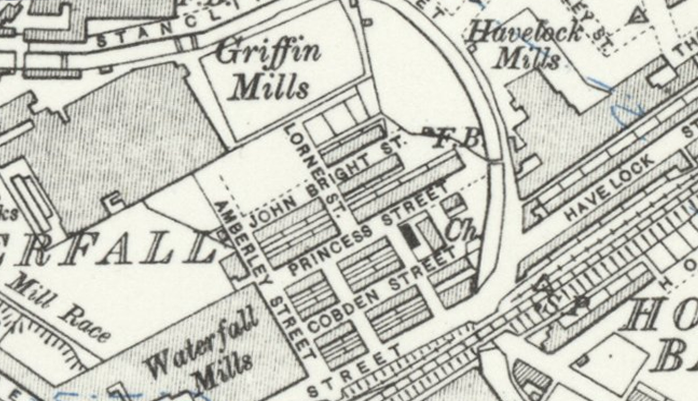
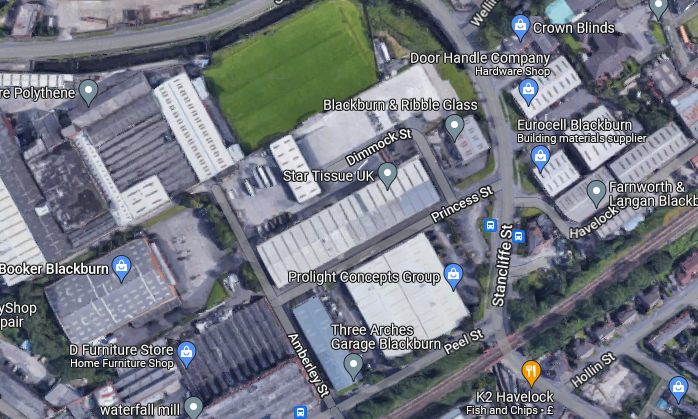
At around 6.45 am, Thomas Farnworth, who resided at number 26 John Bright-street, had awoken and made his way down into the kitchen, soon followed by his wife, Hannah. And only minutes later and having looked through the kitchen window, Hannah suddenly exclaimed, “What is this, Tom, in our backyard!”
As Thomas and Hannah, mystified by what looked like a parcel of rags in their yard, plucked up the courage to take a further look, Hannah was fully aware of the little girl who had gone missing.
“I had a feeling that something was wrong.” she would later tell waiting press reporters.
Two neighbours were soon called for, and deciding not to touch the rags, her husband Thomas, set off to fetch the police from one of the local police boxes who returned within minutes of the discovery.
The parcel, which was wet, was wrapped in a newspaper, tied with string and was enclosed in a piece of quilt-like material. It had been placed right at the bottom of a door leading into the back street.
When questioned, Thomas told the police that the parcel was not there when he went into the yard at 10:45pm the previous evening, saying had it been there, he could not have failed to notice it. He also told the police that he heard nothing during the night, but one of his children had said he heard the sound of clogs in the back street.
Chief Constable, C. G. Looms, along with Superintendant Langley, Inspector Dickinson, Dr. G. Bailey and a photographer were at once sent to the scene.
An initial inspection of the parcel would soon discover the remains of a badly charred and terribly mutilated body minus both its legs, and an obvious attempt had been made to dispose of it by means of fire.
One can only imagine what poor Helen’s parents were going through and her mother, Phyllis, was prostrate with grief when the press tried to speak with them.
“She was a lovely child, and she was just developing,” said Charles.
Although he added he had not yet been asked to identify the girl, the police had brought for his scrutiny, various objects. One of them was a piece of a horse’s bit chain which he had polished up, and for which his daughter, Helen, seemed to have had a liking for, often carrying it around with her.
Throughout the day, police officers would make inquires throughout the neighbourhood and as a result of information received, 62 year old James Henry Mills, who had resided at number 24 John-Bright street was brought to the Central Police Office at 10:00pm in the evening. Further inquires proceeded and at 10:45pm, his wife, Edith Mills was also brought to the same station for questioning.
Based on the information Looms took from the interviews with both James and Edith, both prisoners were charged with the murder of young Helen. Interestingly, upon hearing the charge, James turned to his wife, telling her, “Don’t say a word.”
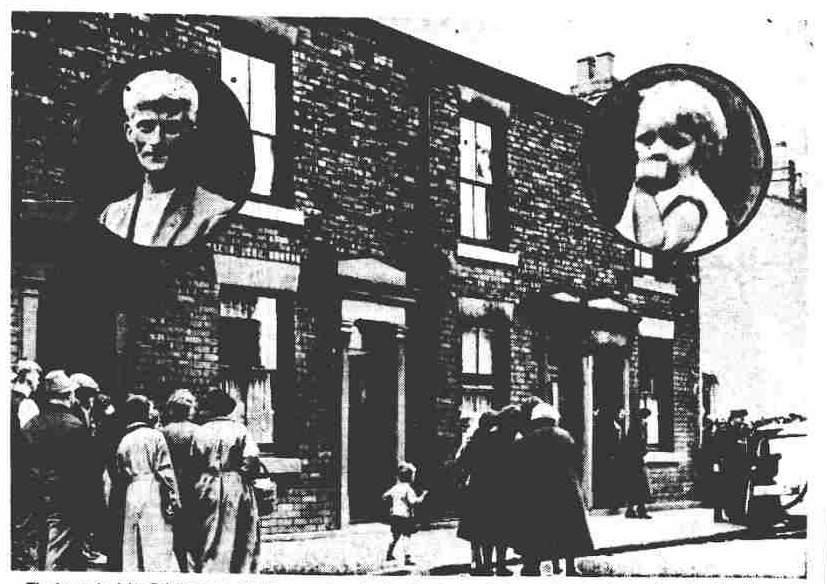
On Thursday, 18th July 1935, James and Edith Mill appeared at Blackburn Police Court, where they would hear some damning evidence being given by Chief-constable Looms and other witnesses.
In the course of his evidence, Looms told the jury that whilst investigating the Mills’ home, he smelt a distinct odour of burnt flesh. Mr. H. Backhouse, defending, remarked – “I don’t know what experience you have of the smell of burning flesh?”
“Well,” replied Mr Looms, “I am a married man, and I know when the joint gets over done!”
Mr. E. G. Robey, prosecuting, after going into great detail on the events leading upto and upon the discovery of Helen Chester’s remains would tell the jury members that according to medical evidence, Helen was dead when her body was burned, with the cause of death probably due to a heavy blow on the right side of the head, with an instrument such as a hammer or mallet.
He would back up his claim by saying that a piece of the skull would be produced in which a hole the same size as the head of a hammer that had been found in the coal shed that had belonged to James Mills. A mallet was also discovered in the house, as was a piece of chain similar to one of Helen’s favourite toys.
Other items of interest would also be shown as evidence – such as metal buttons similar to those on a blazer Helen was wearing were found in the remains of a large fire in the kitchen grate, along with four pieces of charred bone.
In the front living room, another button and a piece of human bloodstained newspaper that had contained one longish piece of blonde hair was also recovered.
More incriminating evidence was admitted, such as a piece of charred bone that had been wrapped in a newspaper and placed at the bottom of a chest of drawers in Edith’s bedroom. This was found to fit exactly the socket of the pelvis of Helen Chester.
“Bone, chain, buttons and hair – there is, I submit, very strong circumstantial evidence that the bone the rest which were distributed in every room in the house came from the child Helen Chester,” said Mr. Robey.
Mr. Robey then posed the question, “What was the motive for the killing of this child? No one knows, unless it be the prisoners or the murderer or murderess, whoever they may be. Was it humanly possible for anyone else to have been in the Mills’ house distributing bones and buttons and bits of skin without the prisoners’ knowledge?”
Chief-constable Looms was then next to be questioned.
He told the jury that on the morning of the discovery of the parcel in the yard, and after speaking to P. C. Davies, James Mills had admitted to seeing it at five o’clock that morning from his bedroom window.
Looms, on being informed on the parcel being noticed at such an early hour by James Mills, went to speak with him, asking if he could take him to the spot from which he saw the parcel. Both men had then made their way to the back bedroom from which it was possible to see two-thirds of it.
Mr. Looms asked James why he hadnt reported it to the police, with James replying, “I don’t know. I did not know it was the child.” Looms replied saying, “Nobody has said it is.”
Mr. Looms then told the jury that during questioning at the police station, he had shown the single strand of golden hair that had been found adhering to the crumpled bloodstained newspaper to James, who replied saying that “That’s funny. It’s got me beat! It must be one of the missus’s.”
And when asked if he could explain why there were buttons in the ashes of the fire grate James said, “I know nowt about it.”
As for the pieces of bone that had been found in the fireplace, James said, “Bone? Oh! Yes, we had breast of lamb yesterday for dinner, and I threw the bone into the fire.”
A man by the name of Michael Devitt would take to the stand, telling the jury that he and James Mills had talked about the missing child on July 1st. James had said to Devitt that, “it is a mysterious thing. I don’t think she is in the brook.”
James also had told Devitt that he thought the child had been run down by a motor car and that the driver must have taken her away.
Another witness, Herbert Duckworth, who was with Devitt at the time, would back up Devitt’s statement, but added that he had told James that, “if it (the child) is not found tonight, they are bound to search every house in Waterfall in the morning.”
James Mills said nothing and the conversation abruptly ended.
D. C. Heald was next to be called and would describe the shocking scenes he had encountered when visiting the Mills’ house.
He was the detective that had found fragments of bone in the kitchen fireplace along with a shovel that appeared very greasy. And along with the four pieces of bone, four buttons were also recovered. In the kitchen sink, there appeared to be a piece of charred bone with pieces of skin adhering to it.
He also examined the waste pipe and found a piece of bone that was similar to that which was found in the sink. In the coal cellar under the stairs was a hammer, and under the hearthstone in the front room was a piece of button similar to that found near the fire in the kitchen.
There was a mallet on the premises, and in the back bedroom upstairs was a quilt on which there were what appeard to be bloodstains.
D. C. Frederick Dixon, just like D. C. Heald, had also found fragments of bone in the bottom drawer of a chest that had been wrapped in newspaper, and in the boiler downstairs was some pale pink liquid which smelt strongly of carbolic.
Professor J. E. W. MacFall, professor of forensic medicine of Liverpool University described the child’s remains and produced pieces of skull. There was no evidence, he said, that breathing took place after the body was exposed to fire.
He also added that the body was so badly burnt that it was difficult to arrive at any real conclusion as to the cause of death. The hole in the skull, however, was very definate. That could have been produced in many ways by external force.
After being shown both the hammer and mallet found at the Mills’ house, Professor MacFall agreed that either of the two could have produced such damage to the skull.
Another witness by the name of Evelyn Emmett, a nine-year old schoolgirl of 40 John-Bright street, said that after Helen and other children had been playing together, she accompanied Helen to what was known as “bottom field” in John-street. Helen then ran away from her, making her way down Princess-street. She would also say that many children of the district were regular visitors to the Mills’ house, and sometimes used to get pieces of cake and other things to eat there. The children liked going to the house.
Helen’s mother, Phyllis, in a terrible state when called to give evidence, sobbed when giving evidence, telling the the jury that she last saw Helen alive at around 7.45pm on the Sunday evening playing with her friends. She would then give details of what Helen was wearing on the evening of her disappearance.
Charles Chester, Helen’s father, would also take to the stand. He was asked by Mr. Robey how he had ‘got on’ with Mr and Mrs Mills, to which he replied, “I didn’t trouble with them at all.”
Mr. Robey then asked; “Were you friendly?”
“Not unfriendly; I didn’t trouble with them.” Charles replied.
Charles was then asked if he had noticed anything about James behaviour that perhaps made him feel at unease.
“He didn’t look pleasant. I kept out of his road as a rule. It was not a pleasant look if he ever did look at me.”
The inquest would be adjourned until the following day, Friday 19th July – and after a brief recap of all the evidence put before them, both James and Edith Mills would be charged with the murder of Helen Chester and committed for trial at the next Lancaster Assizes.
Mr. H. Backhouse, defending, told the jury that for them to convict the accused, they must be satisfied that the circumstances were consistant with the accused committing the alleged act.
He was also speak to the jury, telling them that they had been faced with two difficulties – the first being whether or not that the remains found in the back yard of Mr. and Mrs. Farnworth were indeed those of young Helen, and the second being which, if either of the two accused had killed the child.
The evidence was purely circumstantial. There was practically no evidence of any sort against Mr. Mills’ to connect him with the death of the child, and there was little, if anything, to connect Mrs. Mills’ with the death.
“It would be a dangerous thing to send these two prisoners for trial on such a slender circumstantial case.” he would argue.
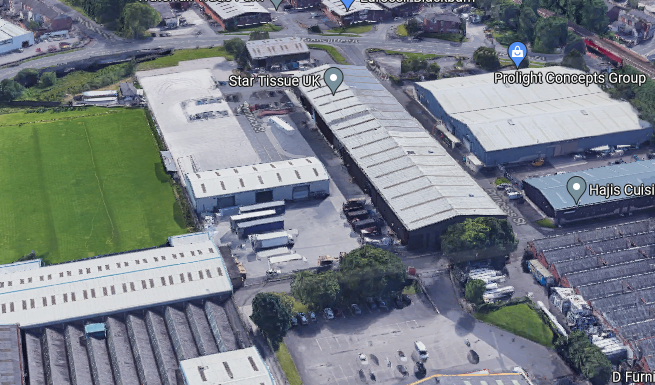

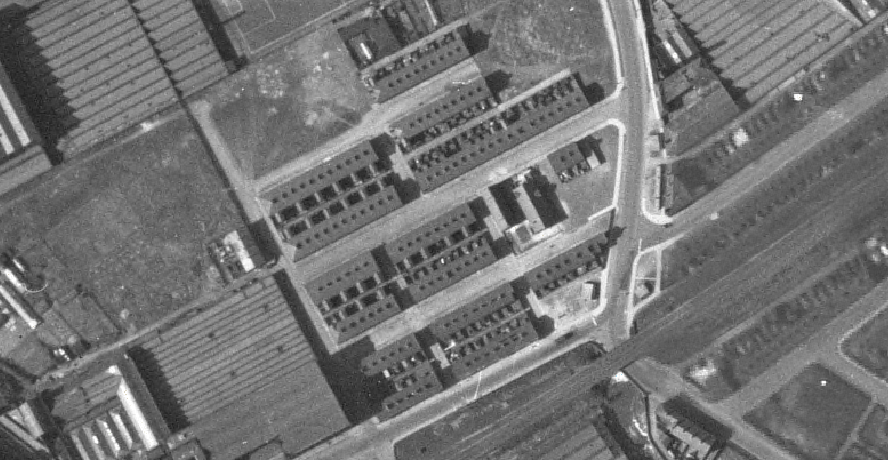
On Wednesday, 16th October 1935 – the trial of James and Edith Mills, charged with the murder of Helen Chester, began at the Lancaster Assizes.
A queue, mainly consisting of women had began to form outside the Castle before eight o’clock in the morning, and the public part of the court was filled long before the case began before Mr. Justice Hilbery.
Interestingly, around twenty witnesses would be asked to appear, and more than forty exhibits were brought into the court by police officials, including a scale model of three houses in John Bright-street, each measuring about a yard square and eighteen inches high – all containing furniture.
Prosecuting, Mr. J. C. Jackson spoke first of the moments when Helen Chester had been reported as missing and the subsequent search made by the residents of John-Bright street and the police. He described Helen, who was wearing a navy blue blazer with metal buttons, a brown and white check frock and black-buttoned ankle-strap slippers and liberty bodice. She also had a small piece of chain which her father had given her to play with and it was this chain that would play an important part in the case.
Mr. Jackson would also tell the court that James Mills had been at another house in Coniston-road but had left at around quarter to eight to go to his home which was half a mile away. On his way, he a man by the name of Frederick Pickering who had a little girl called Margaret.
They had heard about Helen missing and they have become anxious of their own child who was also out playing.
At around 9:00pm, Pickering made his way back to John-Bright street and to the home of James Mills.
“Is Margaret here?” he asked James, who was peering out from a window.
Margaret Pickering had visited the Mills’ house at around 8.30pm, just a few minutes before James had returned home. She would tell Edith that little Helen Chester had gone missing and people had already gone out looking for her.
“Margaret’s wanted,” shouted James from inside his house, and a few seconds later, Margaret appeared from inside.
Mr. Jackson then turned to the jury, saying, “I shall ask you to come to this conclusion, that at that time, nine o’clock, Helen Chester was either alive or dead in one of the rooms of that house.”
Mr. Jackson then brought up the conversation James had with Michael Devitt and Herbert Duckworth. He would imply that because Duckworth had mentioned the police searching all the houses on John-Bright street should Helen not be found that evening, it had led to James and his wife Edith deliberately setting about trying to get rid of any evidence of the child’s death in their house, how it had died, or that the child had ever been in their house.
He would also mention of black smoke and pieces of black paper being seen coming from the Mills’ chimney by another witness by the name of Henry Abraham Ball who resided at number 16 John-Bright street.
This is important as Helens lifeless body was orignally found wrapped in newspaper – specifically wrapped in pages nine and ten of a Sunday newspaper, a copy of which had been delivered to the Mills’ house on the day that Helen disappeared.
When the house was searched, a copy of this paper was found, with pages nine and ten missing, along with pages eleven and twelve. Neighbours had seen pieces of burnt newspaper coming from the chimney.
Mr. Jackson then went through all the evidence that the police had recovered during their initial search of the Mills’ house.
He spoke of the quilt that had been wrapped around the body. This was the same that was found on Edith Mills bed, and the cord that was used to wrap the parcel was similar to a piece of clothes-line found in one of the outhouses of the Mills’ house.
On the dividing wall between the Mills’ house and that of the Farnworth’s, where the parcel was discovered, there were found pieces of charred flesh, some burnt paper and pieces of cloth material and it became quite apparent that the body had been pushed over the wall.
There were also blood stains in both James and Edith’s bedrooms.
And then there was the mallet and a blood-stained hammer which had been recovered from the Mills’ house.
Mr. Jackson would then go into the details of what occurred when James had been brought into the police station for questioning. He would mention that when asked about the bone fragments being discovered, James had replied saying, “We have been having breast of mutton for dinner, and the wife has thrown the bones on the fire.”
Strangely though, when told that the bones were not from mutton, James replied, “Oh, I remember, the cat brought in a stinking fish and it was thrown onto the fire.”
Mr. Jackson turned to the jury and refuted these claims, saying neither were they mutton or fish bones and that parts of the bones could be fitted into the body of the child.
And yet, despite all of this incriminating evidence, both James and Edith Mills would throughout the case, deny all knowledge of Helen and her whereabouts during the period when she went missing.
However, Mr. Jackson thought differently, saying, “If these people were innocent, they had nothing to hide, and could have been perfectly frank. I am going to say that the child met a violent death at the hands of one of these prisoners, the other being there and aiding and abetting; though not necessarily both striking the blow. Then afterwards they went through that awful, ghoulish ceremony of burning the body.”
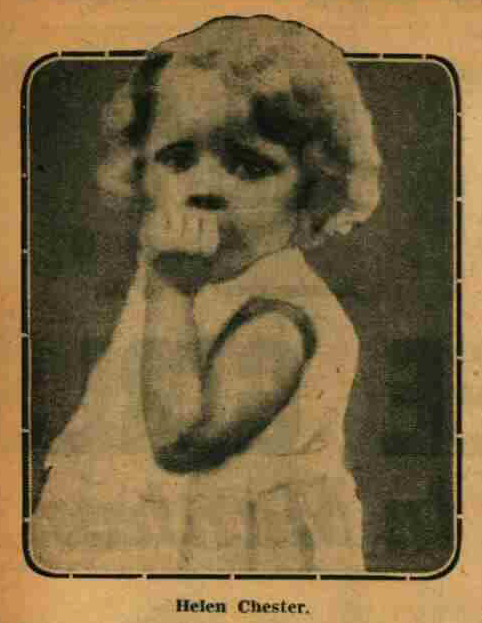
The case was then adjourned until the following day, at 2.30pm on Thursday 17th October, and from the opening statement made by Mr. Glynn Backledge who was defending Edith Mills and Mr. W. Gorman, defending James Mills – it was decided that they would not be calling any evidence for their defence.
Mr. Jackson, prosecuting then immediately addressed the jury, saying that he had submitted an irresistable case but it had depended on what was known as circumstantial evidence. Interestingly, no one had been called to suggest that what had happened to Helen had been an accident and if it was just an accident, why then didnt the Mills’ report it to the police?
Surprisingly, neither James or his wife Edith were called into the witness box, and Mr. Gorman, speaking to the jury, reminded them that merely to be present when a crime was committed was not enough to convict. The prosecution had to prove he (James) had participated.
The jury soon retired, but it would be some two hours later when they returned back into court with a guilty verdict.
Upon receiving the verdict, the Judge, Mr. Justice Hilbery, asked if James had anything to say before sentence was passed.
“I am absolutely innocent, sir,” replied James, “That is all I have got to say.”
As for Edith, throughout the two days hearing, it would emerge that she suffered from deafness and found it very hard to hear all that was being said. To some witnesses in court, it appeared that she did not hear the verdict or the judge’s words.
As the Judge passed down the sentence of death by hanging, James gave out a little sigh before he was taken from court and removed to Walton Jail in Liverpool. As for Edith, she was removed to Strangeways prison in Manchester.
The date for the executions of James and Edith were provisionally fixed for Tuesday, November 5th in the case of James, with Edith’s execution set for November 6th. However, the jury added a recommendation of mercy to the judge in the case of Edith.
On Wednesday, 23rd October, appeals were made on behalf of the prisoners by both of their solictors. The grounds for the appeals were based on : the fact that they were not guilty of murder ; that on the evidence called for the prosecution there was no case to go to the jury ; that the case should have been withdrawn from the jury ; that the verdict of the jury was contrary to the evidence.
They would also comment on the fact that both prisoners had not given any evidence and that the Judge had mis-directed the jury.
On Thursday, 21st November, both James and Edith would attend the court of appeal. This time, James would ask that he may have the opportunity to enter the witness box, but this was refused. He maintained that he never wanted to give evidence during the initial trial as to not incriminate his wife in anyway shape or form.
As for his defence, his counsel would plead that James was not in the house at the time of Helen’s disappearance and that his movements had been corroborated by the police.
The evidence of the Crown seemed to indicate that Helen was dead before 7.45pm and James had not arrived back at home until some time around 8.30pm.
Mr. Justice Goddard asked; “Is there no evidence that he might have been charged with being an accessory after the fact?”
“He was not charged with that.” Counsel replied.
Mr. Justice Macnaughten then asked ; “There was evidence that on the Tuesday the grate smelled of burned human flesh and what was more the body of the child was found to have been wrapped in a part of a quilt and newspaper tied with string all of which came from Mills’ house.”
Mr. Gorman, defending replied, saying he could not dispute that the child’s body had been placed upon the Mills’ kitchen fire, but he did contend that there were no evidence of murder or that Mills’ knew anything about the cause of the child’s death.
Mr. Gorman then brought up the issue of Mr. Justice Hilbery’s summoning up at the end of the trial, saying that the Judge had repeatedly coupled both James and Edith together, in such a phrase as “One or other, or both” as if it did not matter which did the act. He would also contend that the Judge did not say that one of the couple (James) could be aquitted and the other convicted (Edith), and he did not remotely suggest that the child’s death might have taken place when James was not in the house.
As for Edith and her defence, Mr. Glynn Blackledge argued, saying that his client was ‘very’ deaf and might have been in one room without hearing what was taking place in another. His submission was that the case was one which should not have been left to the jury.
He would also argue that for the jury to recommend mercy on Edith, they felt that they had taken the view that one did the deed, that being her husband James, and that Edith had aided and abetted.
After both defence teams had finished their appeals, Mr. Jackson, prosecuting, addressed the court, and as he was delivering his evidence regarding the movements of Helen Chester on the evening of her disappearance, James rose in the dock and exclaimed; “Excuse me sir, can I make an explanation about that?”
A warder restrained him and James was made to sit back in his chair with the Judges taking no note of this interruption.
After hearing all of the evidence produced by Mr. Gorman, Mr. Blackledge and Mr. Jackson, Mr. Justice Macnaughten intimated that the conviction of James Mills would be quashed, but the verdict against Edith Mills would stand and her execution would be set for 10th December 1935
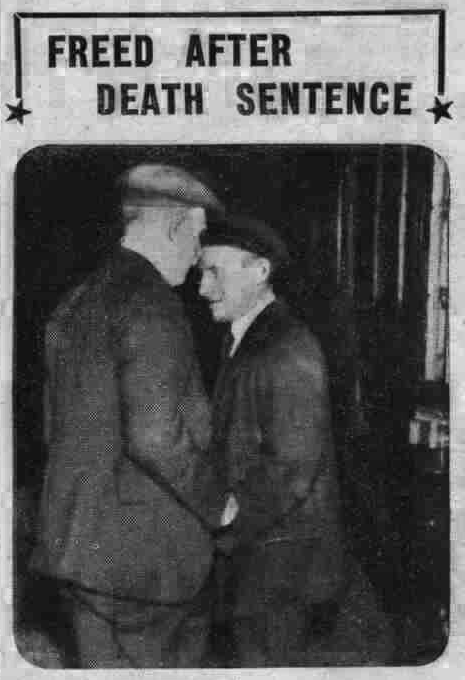
On Wednesday, 27th November, the Home-Secretary would sensationally reprieve Edith. This would mean that the sentence of death would be quashed but she would still have to face life in prison.
As for James, he walked away a free man, and despite the wide spread news reports that had covered this extraordinary case from the very beginning, he would refuse to answer any questions when approached by reporters. He would, however, visit his house to keep his lonely vigil whilst his wife, Edith, faced life in prison.
However, less than four months after successfully winning a reprieve, on Friday 5th March 1936, Edith Mills died in Holloway prison from natural causes. According to medical evidence, she suffered from chronic heart disease, and on February 19th, 1936, had a cerebral seizure. Her heart condition became worse, resulting in her death on Friday, 5th March from syncope and cerebral haemorrhage.
Helen Chester’s body was interred at Blackburn Old Cemetary on Monday 8th July 1935. It was reported that upto 5,000 people had attended, travelling by trams that had been made specially available for the funeral.
A large number of people had already congregated at St. George’s Free Church in Mill Hill, where a service had taken place and had been conduted by the Reverand H. G. Sobey. And long before the cortege was due to leave, Helen’s tiny coffin had lain in the private chapel of the undertakers called Scales Funeral Service Limited. It was then taken to her home at number 22 John-Bright street shortly after noon, where mourners joined the cortege.
Around the coffin were various floral tributes, including bunches of wild flowers.
At the cemetary, people started to congregate from as early as 11.30am and more would appear in a constant stream, vacating from the trams that had brought them from the town. And due to the large masses of people who had come to pay their final respects, police had to be called to make a way for the coffin bearers and mourners as they made their way to the final resting place where young Helen would be buried.
On the coffin was placed the parents’ token of carnations and lilies. One simple but touching contribution was a little posy of sweet peas sent in the name of Elsie and Eveline Emmett, two little companions of Helen and one of whom was playing with her on the evening of her tragic disappearance.
As the coffin was lowered into its final resting place, the Reverand Mr. H. G. Sobey said; “Whosoever shall offend one of the least of these, my little ones, better for that person that they were hanged with a millstone round their neck and drowned in the depths of the sea”.
And after expressing the hope that Helen Chester suffered little, Mr. Sobey concluded, “Never swear at children, never wish them from your doors. Sometimes I know, they may be a little tiresome, but children are children”.
Sources used in this story;
Lancashire Evening Post – Tuesday 02 July 1935
Lancashire Evening Post – Wednesday 03 July 1935
Daily Herald – Thursday 04 July 1935
Daily Mirror – Friday 22 November 1935
Sheffield Independent – Saturday 23 November 1935
+ many more courtesy of the British Newspaper Archive – www.britishnewspaperarchive.co.uk and www.ancestry.co.uk
Please follow me on social media;
Twitter – https://twitter.com/dohpods
Instagram – www.instagram.com/dohpods
Youtube – https://www.youtube.com/c/DaysofHorrorPodcast
Music;
Casual Desire – Ugonna Onyekwe – No Copyright Music
Beyond the Lows – The Whole Other – No Copyright Music
Remnants – Myuu – No Copyright Music

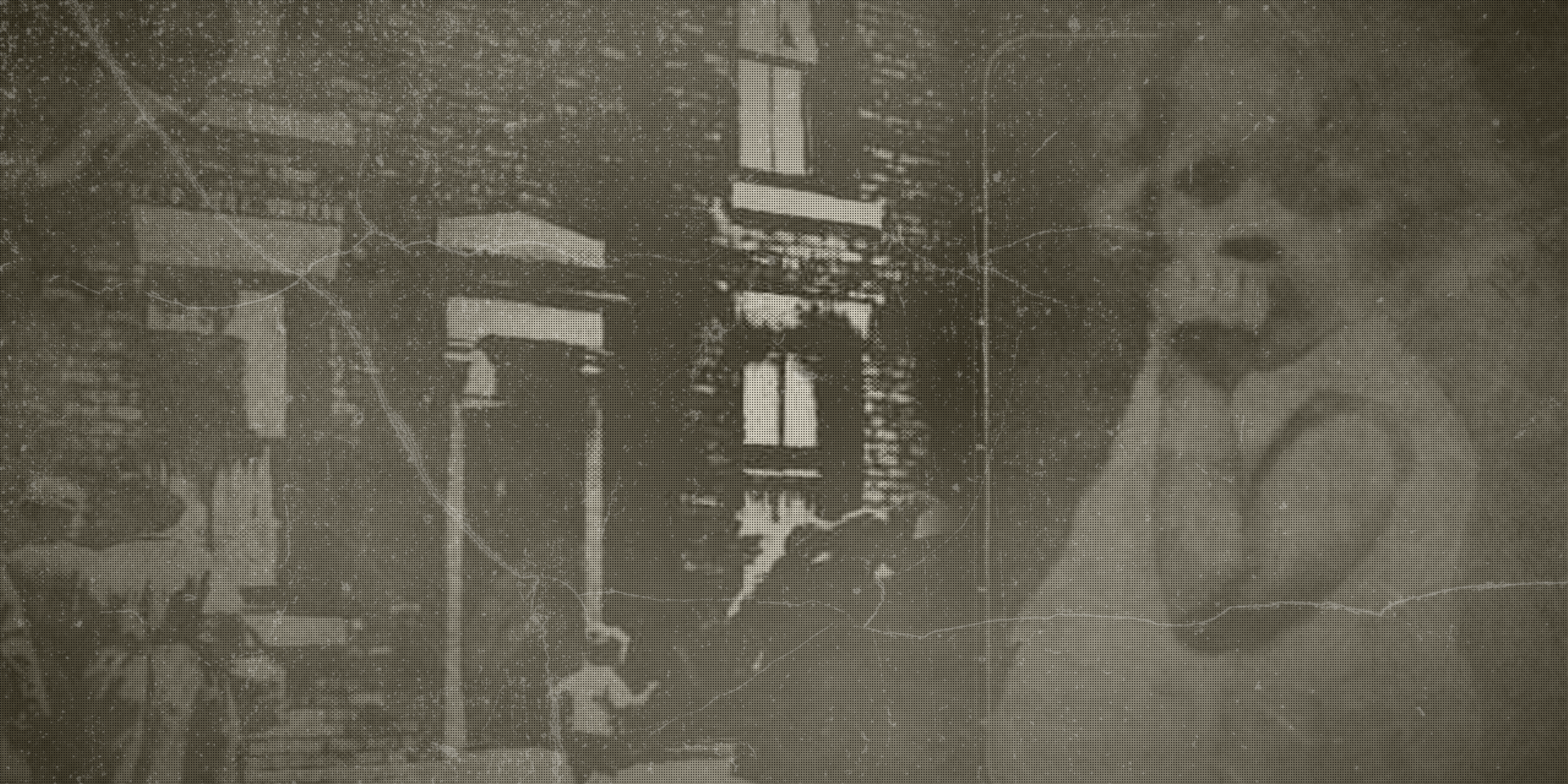
Leave a Reply